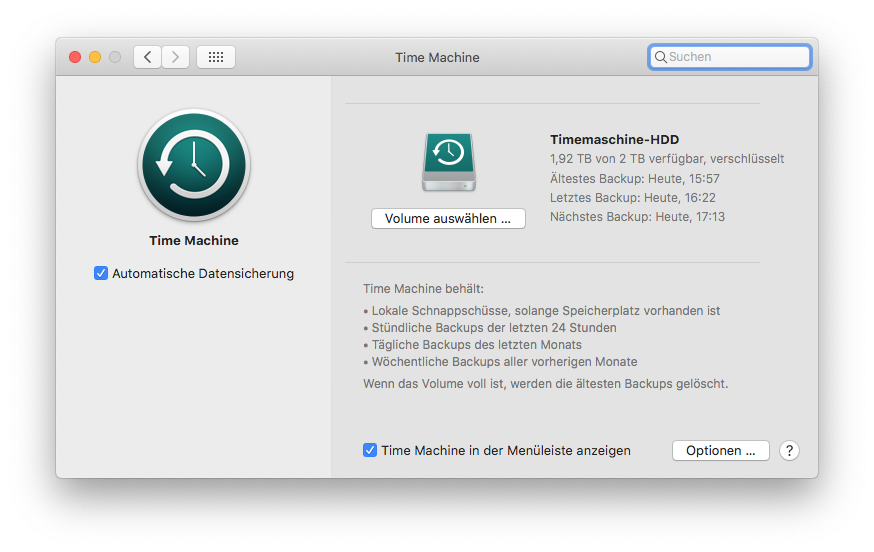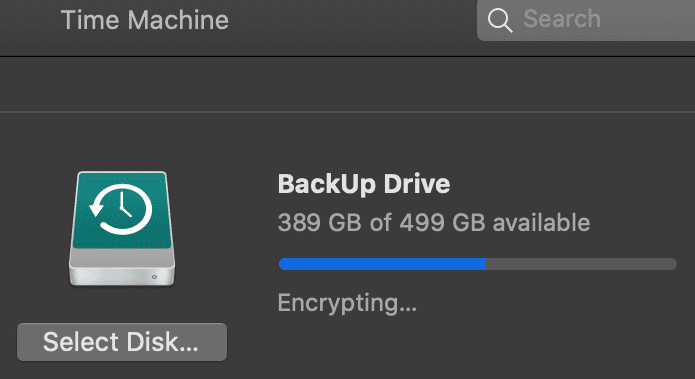

- #Time machine mac os extended journaled encrypted mac os x#
- #Time machine mac os extended journaled encrypted software#
If you want to change the password, you need to decrypt it and then use APFS with encryption afterwards. You can still decrypt HFS+ volumes, but that's it. Disk Utility does not even list Mac OS Extended with encryption as an option any longer and the other way to do this so far – right-clicking the volume and clicking encrypt – also just creates a new APFS container with encrypted volume, partitioning your drive between HFS+ and APFS. Any attempt to encrypt an HFS+ volume, will result in a new APFS container (with encrypted volume) to be created. I've been using external drives formatted as Mac OS Extended Journaled (HFS+) with encryption for a while and noticed that Big Sur can not create volumes formatted as encrypted HFS+. Either way, that takes a few minutes.I thought I'd share some observations I made after having recently updated to Big Sur, with some big surprises regarding external drives.
#Time machine mac os extended journaled encrypted mac os x#
#Time machine mac os extended journaled encrypted software#
To start up from your OSX Install disc, insert it in the SuperDrive (or insert the Software Reinstall drive on a MacBook Air). (If you're not sure what version of OSX you're running, click here.) Be sure you use a compatible version of OSX - if you’re running Lion, use a Lion disc if you’re running Snow Leopard, use a Snow Leopard disc, etc. If all else fails, start your Mac up from a different source: the Recovery HD on Lion 10.7.x or later (see Using the Recovery HD), or your OSX Install disc (Software Reinstall drive on a MacBookAir), or a different disk that has OSX installed on it.

Exclude it from Spotlight indexing, via System Preferences > Spotlight > Privacy.If you're running any anti-virus software, exclude the disk from it or turn it off.If you get a message saying " Could not unmount disk," some other process is using (or trying to use) the disk: If in doubt about them, see Disk Formats. Set any other partitions to the desired format. Effective with Lion 10.7.x, you can encrypt the backups, per Question #31.If any disks/partitions being backed-up are case-sensitive, the backup volume must be, too, so select Mac OS Extended (Case-sensitive, journaled).For your Time Machine partition, there are two considerations: Usually, that will be the default: Mac OS Extended (Journaled). For each partition, click on it (it will then be outlined in blue), then supply a name (this is the name that will appear on your desktop and/or Finder sidebar) and size (either by typing in the box or dragging the dividers in the diagram).Į. Sometimes you can't change a MBR drive to GUID or APM and change the number of partitions at the same time if that happens, make a single partition with GUID or APM first, then re-format with the desired number.ĭ. Select the Partition tab, then set the number of partitions from the pop-up menu below Volume Scheme (use 1 partition unless you need more). See Troubleshooting item #E7 for a detailed explanation.Ĭ. Most of the time there's no difference, but if the backups are case-sensitive, there may be problems when restoring previous versions of files via the Time Machine browser (the "Star Wars" display). So if you have, or think you might add, a case-sensitive disk, make your backup disk Mac OS Extended (Case-sensitive, Journaled) now.īut if NO disk/partition being backed-up is case-sensitive, the backup volume can be case-sensitive, but we recommend it be case-ignorant: Mac OX Extended (Journaled). There's no choice: that’s the only way Time Machine can back them up. If ANY disk being backed-up is case-sensitive, then your backups must be case-sensitive also. (Effective with Lion 10.7.x, they may also be encrypted.) Most are Mac OX Extended (Journaled) see if any are Mac OS Extended (Case-sensitive, Journaled). Click each partition in the sidebar (indented under the main line of the drive), and you'll see the Format towards the lower left. Do not use case-sensitive unless you're sure you need it.Ĭheck the Format of all the disk/partitions to be backed-up, via Disk Utility, in your Applications/Utilities folder. That's the default if Time Machine formats it for you, but non-case-sensitive (also known as case-ignorant) is the default for all other volumes.

A case-sensitive format means upper-case letters in file names are seen as different from lower-case letters. Case-sensitivity on Time Machine backups.


 0 kommentar(er)
0 kommentar(er)
